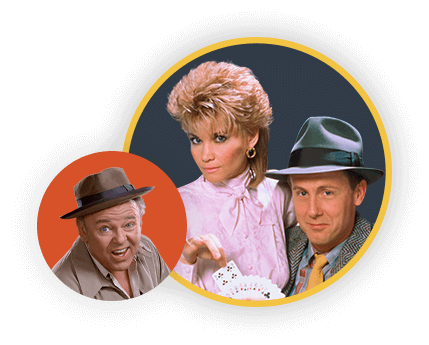8 boss disc jockeys of the 1960s. Did you listen to any of them?

In today's world, with streaming services and digital music, an ocean of music is at your fingertips. Everyone is a DJ. Half a century ago, the transistor radio was a teenager's lifeline to pop music. Disc jockeys were the tastemakers, the gatekeepers of cool, rock & roll stars in their own right. Every major city had its star DJ, and record spinners in Cleveland, Philly, L.A. and beyond become idols.
Dick Clark and Casey Kasem are still household names. Others, though massive at the time, remain a bit more obscure. Here are some of our favorite DJs of the 1960s. Which disc jockey did you listen to?
Top image: American Graffiti / Universal

Dick Biondi
You know that whole "I was into them before everyone else" thing? This Chicago legend has the ultimate bragging right. The loud, knock-knock-joke-telling jock was the first American to play the Beatles, in February of 1963. He would later relocate to Los Angeles and introduce the Fab Four at their Hollywood Bowl gig. Why the move to California? The urban legend was that he told an obscene joke, but the likely reason was a dispute over the advertising on his show.
Image: Discogs

Johnny Holliday
Holliday was the king of the Bay Area scene. While at KYA in 1965, he was named America's number one disc jockey. No wonder he was rubbing shoulders with the likes of Leonard Nimoy. He too would introduce a Beatles gig, at Candlestick. Holliday — oddly not the next entry on our list — was also the announcer on the TV show Hullabaloo. Later, Holliday would move into sports broadcasting and become the voice of the University of Maryland.
Image: SF Gate / Bay Area Radio

Dave Hull
Hull also had ties to the Beatles — sensing a theme here? As he was quite chummy with the British quartet, he often interviewed the band, and recordings of these chats were released as records. For this, he is yet another to have earned the title "fifth Beatle." Dubbed "The Hullabalooer," Hull hit it big on KRLA in L.A., and he opened a teen club called Hullabaloo on Sunset.
Image: Amazon

Hy Lit
With a name like "highlight," Hyman "Hy" Lit was born to be a radio personality. His Hall of Fame show on WIBG dominated the Philadelphia / New Jersey area with a whopping 71% market share. "The Jet Jockey on Flight 99" put out two compilations of early-'60s pop.
Image: Discogs

Robert W. Morgan
Of all the boss DJs of the 1960s, Morgan was arguably the bossiest. He lead the team of "Boss Jocks" at KHJ-AM in L.A. and would kick off each broadcast with a cry of, "Good morning, Boss Angeles!" Morgan nabbed Billboard's award for Air Personality of the Year in 1967, and two years later co-produced and narrated and co-produced the first ever rock & roll documentary, History of Rock and Roll.
Image: DJ Master Control

Bruce "Cousin Brucie" Morrow
One of the kings of the East Coast, Brucie held down the primetime 6:15PM to 10:30PM slot at WABC in NYC. He was adept at blending a variety of genres, and his notoriety led him to onscreen roles in 1978's Sgt. Pepper's Lonely Hearts Club Band and Dirty Dancing. He played the magician in the latter.
Image: Discogs

Murray the K
Okay, there had to have been at least ten "fifth Beatles." To be fair to Murray, who became Brucie's main competition in New York, he had close ties to John, Paul, George and Ringo. The story goes (according to Murray) that George himself bestowed the title on the disc jockey. He was there when the Fab Four first arrived in America, broadcasting his show from the band's Plaza Hotel suite at the invite of Brian Epstein. Murray also earns major cred points for defending and championing Dylan after the folk singer turned electric in the face of stiff criticism.
Image: Discogs

Wolfman Jack
Robert Weston Smith created such an out-of-this-world persona in Wolfman Jack that he was practically a superhero of rock & roll. No wonder the raspy-voiced howler showed up in Wonder Woman — not to mention American Graffiti, The Odd Couple and more. He also narrated The Fonz and the Happy Days Gang cartoon. Revisiting American Graffiti today, his on-air performances sound like a new art form, a strange new language invented for Boomer teens.
Image: Wikimedia Commons




